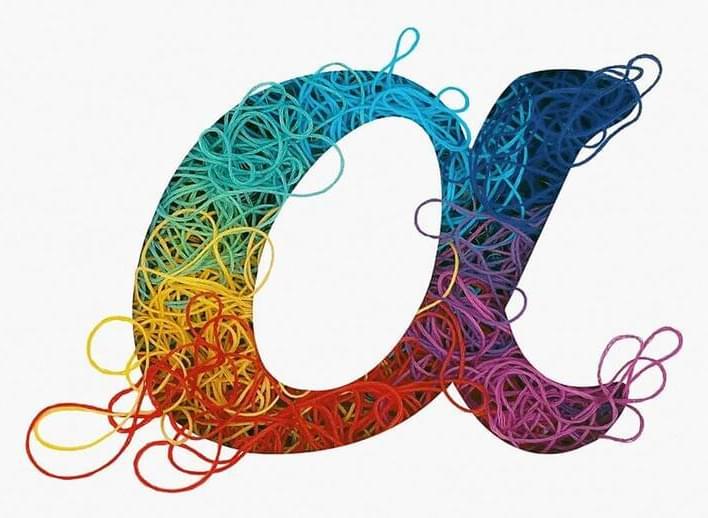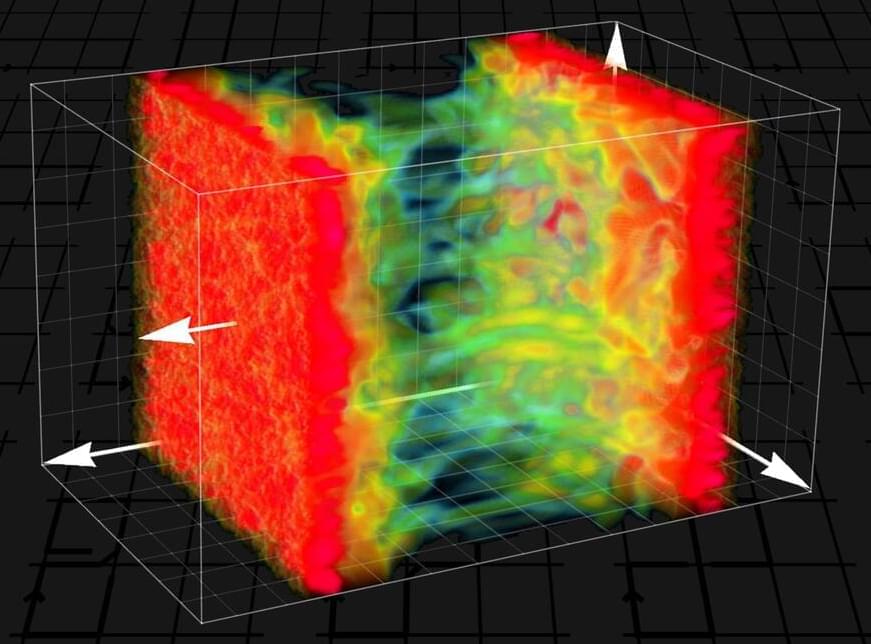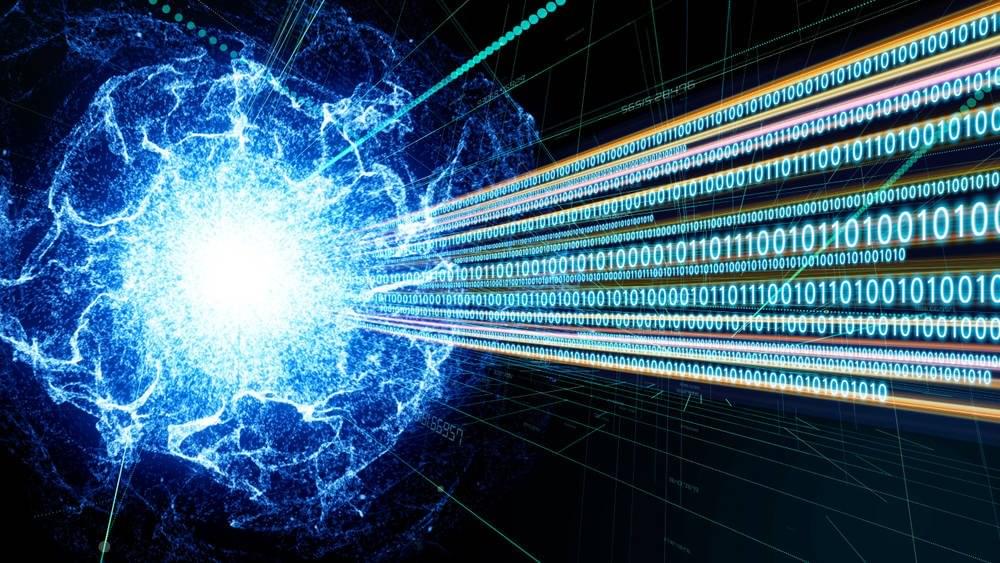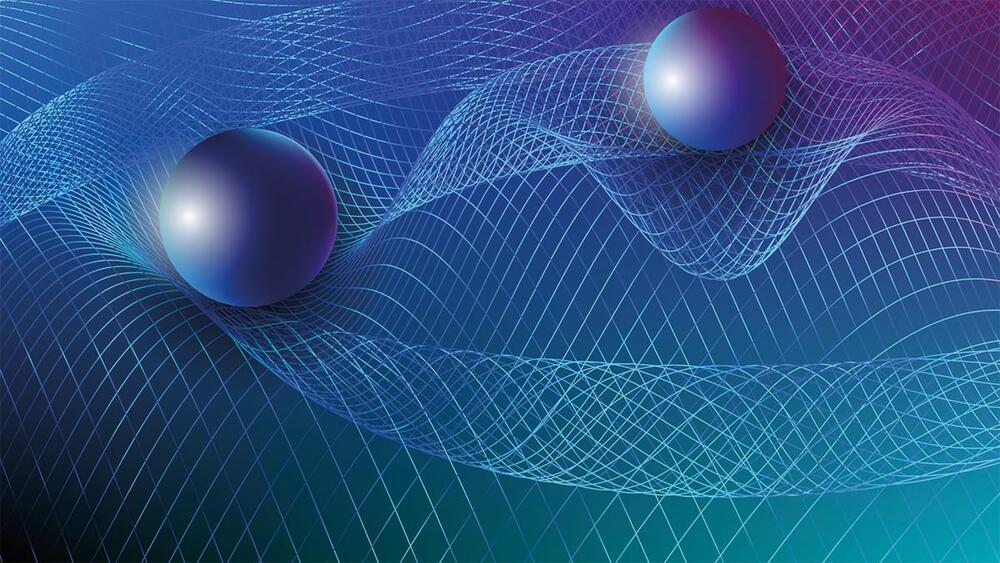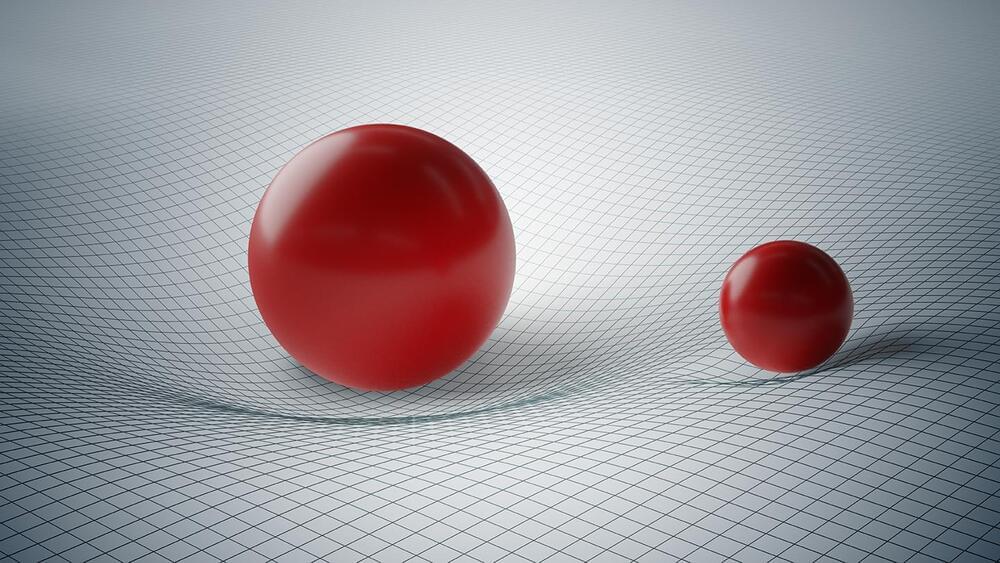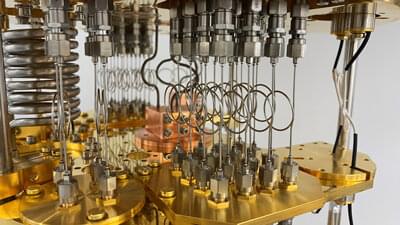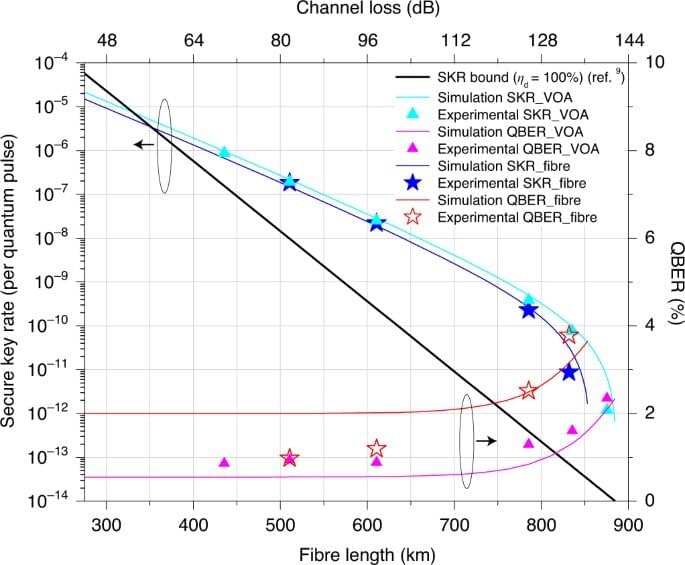
By using quantum key distribution (QKD), quantum cryptographers can share information via theoretic secure keys between remote peers through physics-based protocols. The laws of quantum physics dictate that photons carrying signals cannot be amplified or relayed through classical optical methods to maintain quantum security. The resulting transmission loss of the channel can limit its achievable distance to form a huge barrier to build large-scale quantum secure networks. In a new report now published in Nature Photonics, Shuang Wang and a research team in quantum information, cryptology and quantum physics in China developed an experimental QKD system to tolerate a channel loss beyond 140 dB across a secure distance of 833.8 km to set a new record for fiber-based quantum key distribution. Using the optimized four-phase twin-field protocol and high quality setup, they achieved secure key rates that were more than two orders of magnitude greater than previous records across similar distances. The results form a breakthrough to build reliable and terrestrial quantum networks across a scale of 1,000 km.
Quantum cryptography and twin-field quantum key distribution (QKD)
Quantum key distribution is based on fundamental laws of physics to distribute secret bits for information-theoretic secure communication, regardless of the unlimited computational power of a potential eavesdropper. The process has attracted widespread attention in the past three decades relative to the development of a global quantum internet, and matured to real-world deployment through optical-fiber networks. Despite this, wider applications of QKD are limited due to channel loss, limiting increase in the key rate and range of QKD. For example, photons are carriers of quantum keys in a QKD setup, and they can be prepared at the single-photon level to be scattered and absorbed by the transmission channel. The photons, however, cannot be amplified, and therefore the receiver can only detect them with very low probability. When transmitted via a direct fiber-based link from the transmitter to the receiver, the key rate can therefore decrease with transmission distance.
